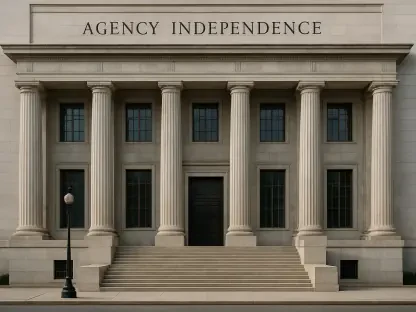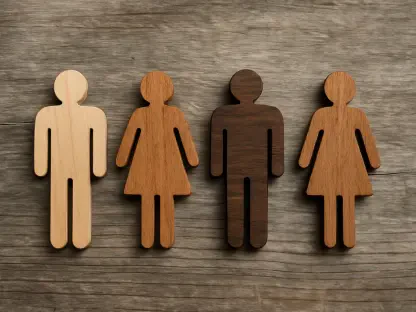Welcome to an insightful conversation with Sofia Khaira, a renowned specialist in diversity, equity, and inclusion. With a deep commitment to fostering fair and inclusive workplaces, Sofia has dedicated her career to helping businesses strengthen their talent management and development practices. Today, we dive into a critical issue shaking the foundations of workplace protections—a recent lawsuit against the U.S. Equal Employment Opportunity Commission (EEOC) over its handling of transgender bias charges. In this interview, Sofia unpacks the complexities of the case, exploring the allegations of discrimination, the legal implications, and the broader impact on workers’ rights. We’ll also discuss how this situation reflects on the evolving landscape of workplace equity under current leadership and what it means for the future of anti-discrimination enforcement.
Can you walk us through the core issues at the heart of this lawsuit against the EEOC?
Absolutely. This lawsuit centers on allegations that the EEOC, under its current leadership, has failed to uphold its fundamental duty to protect transgender workers from discrimination. The claim is that the agency has effectively shut down access to its standard charge-investigation process for transgender employees, which is a critical mechanism for addressing workplace bias under federal law. This isn’t just about isolated cases—it’s about a systemic refusal to enforce protections that are supposed to be guaranteed to all workers, regardless of gender identity. The plaintiffs argue that this approach undermines the very mission of the EEOC, which is to prevent and address discrimination in the workplace.
What specific actions or policies of the EEOC are being challenged in this case?
The lawsuit points to a pattern of what’s being called a “nonenforcement policy” toward transgender discrimination claims. This includes actions like dropping nearly all pending lawsuits from the past year that involve allegations of bias against transgender workers. Additionally, there’s been a withdrawal of funding for joint investigations with state and local agencies on these specific claims. These moves are seen as a deliberate step away from enforcing protections, creating a gap where transgender workers are left without the recourse that other employees can access through the EEOC.
Who is driving this legal challenge, and what are they hoping to achieve?
The lawsuit was filed by FreeState Justice, a Maryland-based nonprofit that provides legal services to the LGBTQ+ community. Their mission is to ensure equal treatment and access to justice for marginalized groups, and in this case, they’re stepping up to represent the interests of transgender workers. Their goal is to secure declaratory and injunctive relief, which essentially means they want a court ruling that acknowledges the EEOC’s actions as unlawful and an order to compel the agency to resume enforcing protections for transgender employees under federal law.
How has the leadership at the EEOC shaped its current stance on transgender worker protections?
Under the current acting chair, there’s been a stated intention to shift away from what’s been described as a focus on gender identity issues from the previous administration. This has translated into a more restrictive approach to handling discrimination claims related to transgender workers. Critics argue that this shift prioritizes a specific ideological agenda over the agency’s legal mandate to protect all workers from bias. It’s a significant departure from the broader interpretation of anti-discrimination laws that we’ve seen in recent years, particularly following landmark court rulings on workplace protections.
How does this lawsuit tie into larger legal frameworks protecting workers’ rights?
This case directly connects to Title VII of the Civil Rights Act of 1964, which the Supreme Court has interpreted to prohibit discrimination based on sexual orientation and gender identity. The lawsuit argues that the EEOC’s current actions—or lack thereof—violate this law by denying transgender workers the same protections other employees receive. Additionally, it claims violations of the Fifth Amendment’s guarantee of equal protection, suggesting that the agency is unlawfully singling out a specific group for unequal treatment. It’s a powerful reminder that workplace rights are grounded in federal law, not subject to political whims.
What kind of criticism has emerged about the EEOC’s approach to transgender discrimination under its current leadership?
There’s been significant backlash from advocacy groups and legal organizations who argue that the EEOC is not just failing to prevent discrimination but actively enabling it through its policies. For instance, some critics have accused the agency of promoting bias by refusing to investigate claims or support transgender workers in legal actions. This perspective flips the agency’s role on its head—instead of being a protector, it’s seen as a barrier to justice for a vulnerable group. These criticisms highlight a deep concern about the erosion of trust in the EEOC’s commitment to fairness.
How does the current situation at the EEOC compare to its historical approach to discrimination claims?
Historically, the EEOC has been seen as a cornerstone in the fight against workplace discrimination, with a long-standing practice of investigating claims and enforcing protections across a wide range of issues, including gender identity. The lawsuit emphasizes that this “nonenforcement policy” marks a sharp break from that tradition. In the past, the agency consistently worked to uphold anti-discrimination laws through investigations and litigation, regardless of the specific nature of the bias. What we’re seeing now is described as a selective approach, which critics argue undermines decades of precedent and progress.
What do you see as the potential long-term impact of this lawsuit on workplace equity?
The outcome of this lawsuit could set a critical precedent for how workplace protections are enforced moving forward. If the court rules in favor of the plaintiffs, it could force the EEOC to realign with its core mission and ensure that transgender workers receive the same access to justice as others. On the other hand, if the current policies are upheld, it might embolden further rollbacks of protections for other marginalized groups, creating a patchwork of enforcement that leaves many workers vulnerable. Beyond the legal ramifications, this case is also shaping public and corporate conversations about inclusion, pushing businesses to step up where federal enforcement may fall short.
Do you have any advice for our readers on navigating workplace discrimination issues in light of these challenges?
My advice is to stay informed and proactive. If you’re an employee, know your rights under federal and state laws—don’t assume protections aren’t there just because enforcement seems inconsistent. Document any incidents of bias or harassment thoroughly and seek support from advocacy groups or legal aid if you face barriers with agencies like the EEOC. For employers, this is a wake-up call to strengthen internal policies on inclusion and anti-discrimination, ensuring your workplace doesn’t rely solely on external enforcement to maintain fairness. Building a culture of equity starts from within, and it’s more important now than ever to lead by example.









